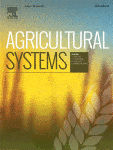Agroforestry systems, containing mixtures of trees and crops, are often promoted because the net effect of interactions between woody and herbaceous components is thought to be positive if evaluated over the long term. From a modelling perspective, agroforestry has received much less attention than monocultures. However, for the potential of agroforestry to impact food security in Africa to be fully evaluated, models are required that accurately predict crop yields in the presence of trees. The positive effects of the fertiliser tree gliricidia (Gliricidia sepium) on maize (Zea mays) are well documented and use of this tree-crop combination to increase crop production is expanding in several African countries. Simulation of gliricidia-maize interactions can complement field trials by predicting crop response across a broader range of contexts than can be achieved by experimentation alone. We tested a model developed within the APSIM framework. APSIM models are widely used for one dimensional (1D), process-based simulation of crops such as maize and wheat in monoculture. The Next Generation version of APSIM was used here to test a 2D agroforestry model where maize growth and yield varied spatially in response to interactions with gliricidia.

